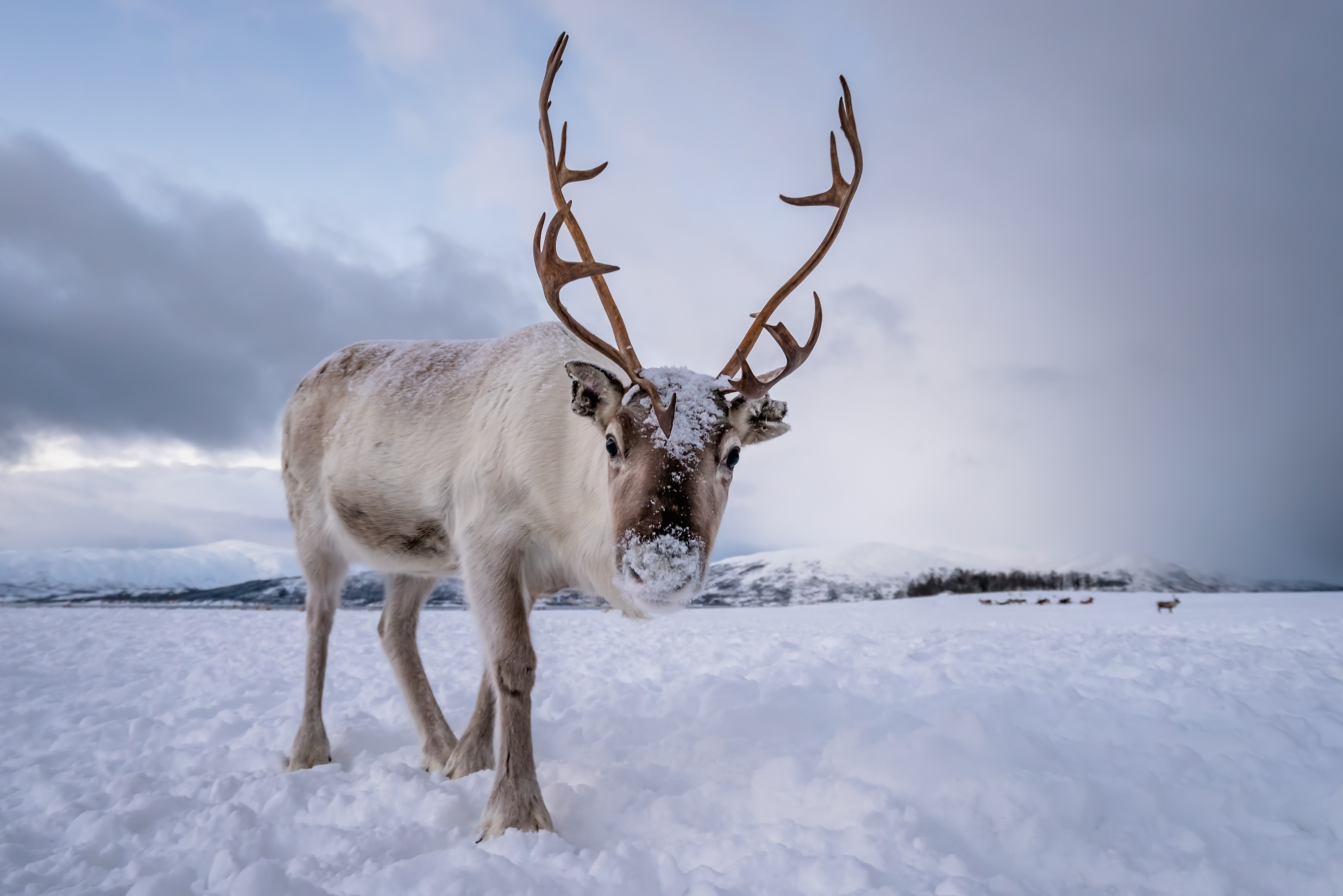Although Rudolph and his band of flying reindeer would certainly be a sight to behold, the sad reality is that reindeer cannot fly. They do, however, have a bunch of other biological superpowers, some of which could even teach us humans a thing or two.
Prancing over jet lag
Some of us switch time zones when visiting family over the holidays and whilst seeing relatives might otherwise be pleasant, it’s hard to feel the festive cheer when you’re experiencing an ungodly level of jet lag. Changing time zones disrupts the circadian rhythm that normally dictates our sleep/wake cycle and makes us feel pretty crummy as a consequence.
Reindeer living in the Arctic, however, don’t have that problem – they can override their circadian rhythms to deal with the continuous daylight in summer and eight-week-long polar night. This is probably also why their fictional, gravity-defying counterparts make such excellent travel companions for Santa.
“Such daily clocks may be positively a hindrance in environments where there is no reliable light dark cycle for much of the year,” said animal biologist Professor Andrew Loudon in a statement. “Organisms use their circadian clock to correspond with their living environment; but if their environment has a very different cycle, it may be better to follow that rather than use the internal clock.”

Reindeer have to deal with a whole host of harsh conditions in the Arctic.
Image credit: Pav-Pro Photography Ltd/Shutterstock.com
Loudon is the co-author of a 2010 study that revealed reindeer have a rhythm of melatonin – the hormone that controls the sleep-wake cycle – secretion that responds to the environmental light/dark cycle rather than an internal circadian rhythm. The study also found that whilst reindeer appear to have the full range of normal circadian or “clock” genes, two of the key ones are regulated in a different way.
“We believe that evolution has come up with a means of switching off the cellular clockwork or perhaps that there is still a circadian rhythm running in some tissues but these are disconnected from the usual outputs – i.e. they have lost the hands but not the gears of the clock. Whether it is a stopped or disconnected clock, the result is a lack of internal daily timekeeping in these animals,” explained Loudon.
Analysis of the differences between reindeer and human clock genes could help researchers to better understand how we might tackle jet lag and other sleep disorders in humans, such as insomnia. “Many of the same genes are involved in the same processes in reindeer as they are in humans,” geneticist Rasmus Heller told New Scientist. Heller is part of the Ruminant Genome Project (RGP), which has since identified clock gene mutations in reindeer.
“There are specific gene variants involved in insomnia, and we can compare these with the genes from reindeer to further understand how people’s circadian rhythm is affected,” added Zhipeng Li, also part of the RGP.
Fighting cancer with antlers
Reindeer are also unique in their ability to completely regenerate their antlers. Our festive friends go through a yearly cycle of antler shedding and rapid regrowth – and by rapid, we mean rapid. Reindeer grow their characteristic headgear back by almost an inch (2.5 centimeters) per day, which is pretty impressive considering antlers are fully-fledged organs, with blood vessels, nerves, and bones to boot.
This fast growth rate sounds like it should be cause for concern – rapid cell division and growth is one of the defining traits of cancer. But surprisingly, reindeer and other deer species have a cancer incidence rate around five times lower than that of other mammals, at least out of those living in captivity.
Why? Again, it comes down to their unique genetics.
In a study carried out as part of the RGP, researchers found antler-specific expression of five growth factor and receptor genes that are all crucial to driving cancer cell proliferation and survival; this could explain why antlers are able to grow so fast, as tumors do.
What’s stopping this from turning into cancer is a series of tumor-suppressing genes, some of which, like their tumor-proliferating nemeses, are expressed exclusively in the antlers. Reindeer also appear to have evolved a number of other genes that support p53, aka “the master tumor suppressor”. p53 is the central element to one of nature’s most critical signaling pathways, identifying DNA damage in cells – another hallmark of cancer – and either fixing it or triggering the cell to self-destruct.
With a distinctive ability to fight off malignancy, researchers are interested in how they can apply this knowledge to treating human cancer.
“Revealing the mechanism underlying the fine balance between the unparalleled growth rate and maintenance of genome stability in the antler model would undoubtedly help further understanding of the initial occurrence of cancer and devise more targeted drugs for cancer treatment,” wrote the authors of a recent study on antlers.
Such treatments are probably a while off, but the potential is nonetheless there. Who needs flight or a glowing red nose when reindeer’s real superpowers were inside all along?
Source Link: Reindeer Have Superpowers And No, One Of Them Isn’t Flying